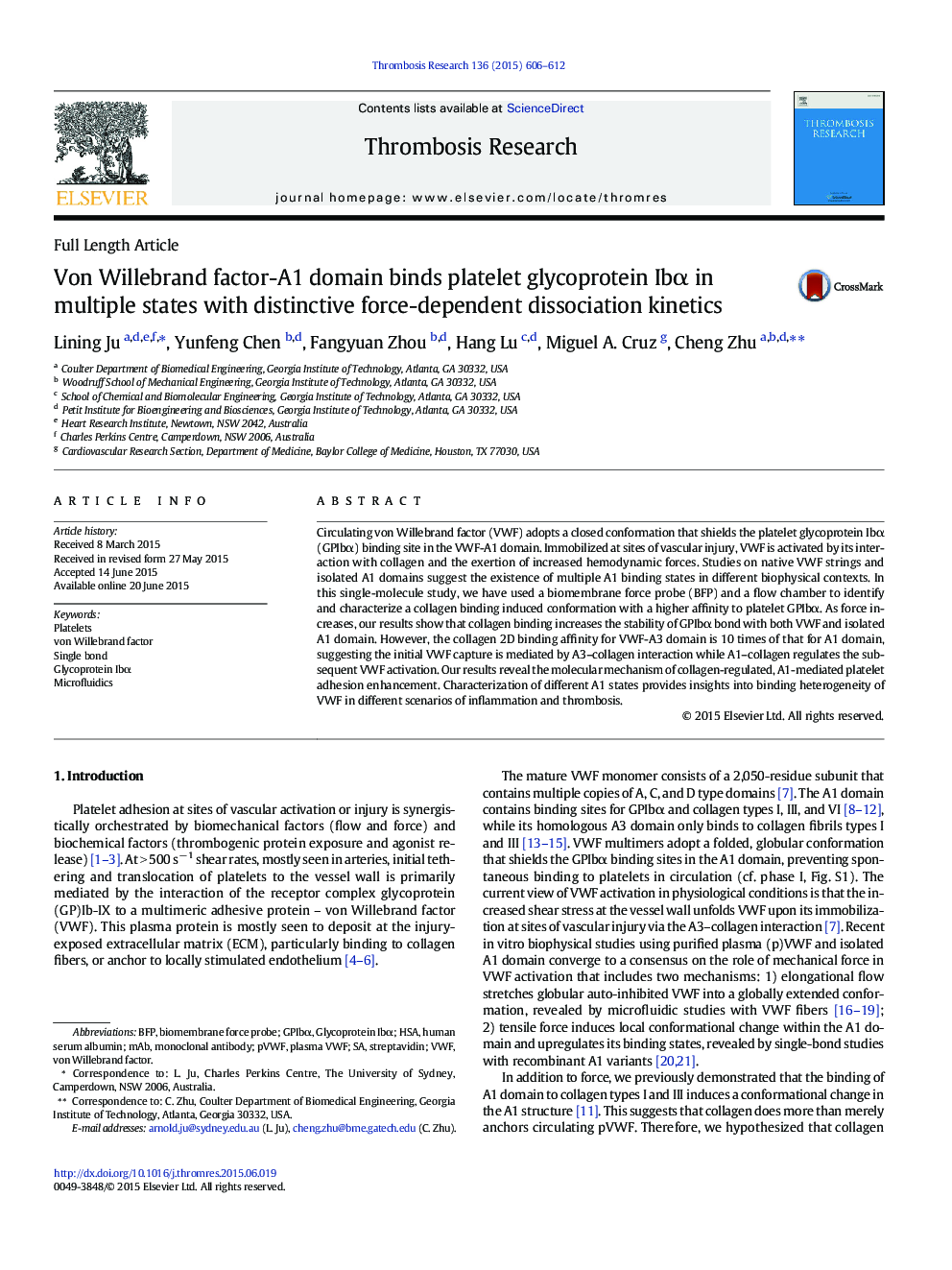| Article ID | Journal | Published Year | Pages | File Type |
|---|---|---|---|---|
| 3027075 | Thrombosis Research | 2015 | 7 Pages |
•Initial VWF capture on collagen is mediated by the A3 domain;•Collagen alters A1 itself into a conformation with a higher affinity for GPIbα;•The length of A1 flanking region determines the accessibility of A1 domains to GPIbα;•Force reduces the inhibitory effect from the A1 N-terminal sequence.
Circulating von Willebrand factor (VWF) adopts a closed conformation that shields the platelet glycoprotein Ibα (GPIbα) binding site in the VWF-A1 domain. Immobilized at sites of vascular injury, VWF is activated by its interaction with collagen and the exertion of increased hemodynamic forces. Studies on native VWF strings and isolated A1 domains suggest the existence of multiple A1 binding states in different biophysical contexts. In this single-molecule study, we have used a biomembrane force probe (BFP) and a flow chamber to identify and characterize a collagen binding induced conformation with a higher affinity to platelet GPIbα. As force increases, our results show that collagen binding increases the stability of GPIbα bond with both VWF and isolated A1 domain. However, the collagen 2D binding affinity for VWF-A3 domain is 10 times of that for A1 domain, suggesting the initial VWF capture is mediated by A3–collagen interaction while A1–collagen regulates the subsequent VWF activation. Our results reveal the molecular mechanism of collagen-regulated, A1-mediated platelet adhesion enhancement. Characterization of different A1 states provides insights into binding heterogeneity of VWF in different scenarios of inflammation and thrombosis.
